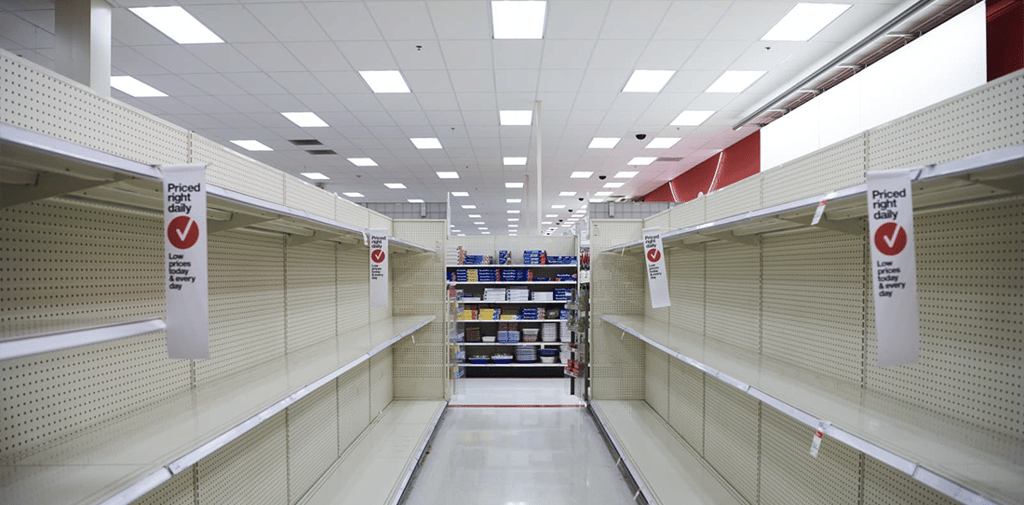Empty Shelves Ahead? How Trump’s 145% China Tariffs Could Reshape Your Shopping Experience
4/28/20254 min read


Empty Shelves Ahead? How Trump’s 145% China Tariffs Could Reshape Your Shopping Experience
Imagine walking into your favorite store, ready to grab toys for the kids, a new pair of sneakers, or even just some budget-friendly home decor—only to find half the shelves bare. Sounds like a flashback to the COVID-19 chaos, right? Well, brace yourself: this could be the new reality for American shoppers as a 145% tariff on Chinese imports, imposed by President Donald Trump, sends shockwaves through global supply chains. Retailers are sounding the alarm, warning of product shortages, skyrocketing prices, and supply chain snarls reminiscent of the pandemic era. So, what’s going on, and how will it affect you? Let’s dive in.
The Tariff Bombshell
In early April 2025, Trump slapped a hefty 145% tariff on nearly all Chinese imports, excluding electronics and pharmaceuticals, which face lower rates. For context, this means a $100 item from China now costs a U.S. importer at least $245 to bring in—before accounting for other costs. The result? Many businesses are hitting pause on orders, unable to absorb the fees or pass them on without pricing out consumers. According to ship tracking data from Port Optimizer, freight vessels scheduled to arrive at the Port of Los Angeles are down 33% year-over-year for the week ending May 10. Some reports even suggest a 64% drop in container bookings from China in the first week of April alone.
This isn’t just a blip. Retailers like Walmart, Target, and Home Depot have met with Trump, warning that empty shelves could appear within weeks if the tariffs persist. Smaller businesses, like Jessica Berger’s pet accessory company Bundle x Joy, face crippling tariff bills—hers is $180,000 for a single shipment. Many lack the cash to front these costs, leaving containers stranded at ports or orders canceled outright.
Why This Hits Hard
China isn’t just a supplier; it’s a cornerstone of U.S. retail. In 2024, it accounted for 37% of apparel imports and 58% of footwear imports. From toys to fast fashion, price-sensitive goods with thin margins are especially vulnerable. Casey Armstrong, CMO of ShipBob, calls these items “the canaries in the coal mine” of a disrupted supply chain. Toys and back-to-school items could vanish first, followed by basics like tees, leggings, and socks. Even electronics, while tariffed at lower rates, rely on Chinese components, so expect constraints there too.
The timing couldn’t be worse. Retailers are prepping for two critical seasons: back-to-school and the winter holidays. Normally, June through August is when ports buzz with shipments during these periods. But with orders frozen and bookings canceled, the pipeline is drying up. Some companies frontloaded inventory earlier in 2025, anticipating tariffs, but that buffer, estimated at one to three months, won’t last long.
The Ripple Effects
Empty shelves are just the start. Prices for available goods are climbing as businesses pass on tariff costs. A CNBC survey found 61% of supply chain respondents plan to raise prices, with discretionary items like furniture and luxury goods hit hardest. Consumers, already wary, may pull back, with 51% of surveyed companies expecting a demand drop by Q2 2025. This could tip the economy toward recession, as 63% of respondents fear.
Small businesses are in the crosshairs. Unlike retail giants with leverage to negotiate, smaller players like Berger’s face existential threats. Unclaimed containers could clog ports, echoing COVID-era bottlenecks. Sean Stein of the U.S.-China Business Council warns of a “train wreck” if tariffs don’t ease, with recovery taking weeks or months even if they do.
A Glimmer of Hope?
There’s a sliver of optimism. Trump has hinted at lowering tariffs, claiming talks with China are underway, though Chinese officials deny formal negotiations. A 90-day pause on tariffs for other countries (excluding China’s 145%) has spurred some frontloading from places like Vietnam, but it’s not enough to fill the China-sized gap. If tariffs drop significantly, orders could resume, averting the worst shortages. But with no deal in sight, the clock is ticking.
What’s Next for Shoppers?
For now, consumers might notice fewer choices and higher prices, especially for budget goods. Some are already stockpiling, fearing a repeat of pandemic-era shortages. Posts on X reflect the anxiety, with users predicting shelves as bare as during COVID. One user,
@SarahSaysWhatev, warned, “Our store shelves are going to be like they were during COVID because of all this.” Retailers are scrambling to source alternatives, but pivoting to new suppliers isn’t instant. As one expert put it, “It’s not like you can flip a switch.” Meanwhile, the global supply chain, battle-hardened by the pandemic, is showing resilience, with some companies rerouting or leveraging data to adapt. But resilience has limits, and the U.S. retail system’s “speed and scale” engine is sputtering.
The Bigger Picture
Trump’s tariffs aim to boost U.S. manufacturing and counter China’s trade practices, but critics argue they’re punishing American consumers and businesses instead. A CNBC survey found 57% of supply chain leaders see cost as the biggest barrier to reshoring, with U.S. production potentially doubling expenses. Instead of a manufacturing boom, companies may hunt for low-tariff countries, leaving U.S. shoppers caught in the crossfire.
As we head into summer, keep an eye on store shelves. The next few months will reveal whether we’re facing a brief disruption or a full-blown crisis. Will retailers adapt, or will we see a repeat of 2020’s empty aisles? Only time—and perhaps a trade deal—will tell.
Thought-Provoking Questions:
How will you adjust your shopping habits if prices rise and products disappear from shelves?
Do you think Trump’s tariffs will ultimately strengthen U.S. manufacturing, or are they doing more harm than good?
Should the government step in to mitigate supply chain chaos, or is this a necessary pain for long-term economic goals?
Photo Credit: CNBC.com
hello@boncopia.com
+13286036419
© 2025. All rights reserved.